Needlepoint stitch guides are essential tools for translating designs onto canvas. They provide clear instructions, enhancing creativity and precision for stitchers of all skill levels.
1.1 What Are Needlepoint Stitch Guides?
Needlepoint stitch guides are detailed instructional resources that help crafters translate needlepoint designs onto canvas. They typically include charts, symbols, and written instructions to guide stitchers through specific patterns and techniques. These guides are designed for all skill levels, from beginners to experts, and cover a wide range of stitches and designs. They often feature color-coded charts that map out stitch placement and include symbols to represent different stitches. By following these guides, crafters can achieve precise and beautiful results, making them indispensable for both simple and complex needlepoint projects.
1.2 Importance of Stitch Guides in Needlepoint
Stitch guides are indispensable in needlepoint, ensuring accuracy and creativity. They provide clear instructions, helping crafters achieve precise stitch placement and pattern execution. These guides enhance efficiency, reducing errors and saving time. They also foster creativity by offering diverse stitch options and design interpretations. Whether for beginners or experts, stitch guides are vital for mastering techniques, understanding complex designs, and bringing projects to life with professional-quality results. Their detailed charts and symbols make even intricate patterns accessible, making them an essential resource for every needlepoint enthusiast.
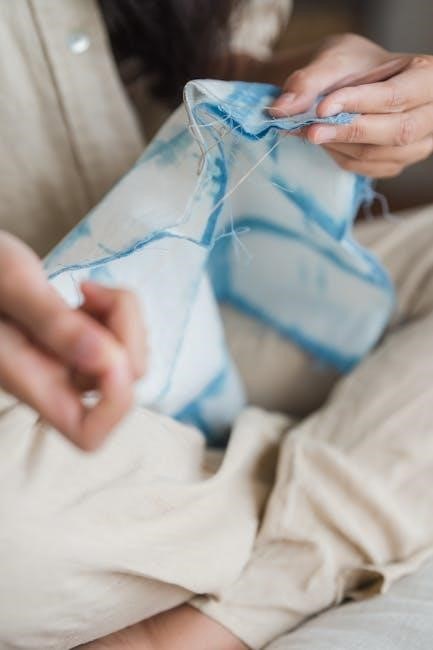
Understanding Needlepoint Stitch Charts
Needlepoint charts visually represent designs, with each box corresponding to a canvas thread. Symbols guide stitch placement, helping crafters interpret patterns and execute designs accurately and creatively.
2.1 How to Read a Needlepoint Chart
Reading a needlepoint chart involves interpreting a grid where each square represents a canvas thread intersection. Symbols or colors indicate specific stitches or thread colors. Start by identifying the chart’s orientation, ensuring it aligns with your canvas. Use the key or legend to decode symbols, and count threads carefully to place stitches accurately. Mark the canvas center to maintain symmetry. Follow the chart row by row, using the guide to track progress. Practice helps refine your skills, making the process smoother and more enjoyable over time.
2.2 Key Symbols and Markings on Stitch Charts
Stitch charts use specific symbols and markings to guide stitchers. Each symbol represents a particular stitch, while colors or shading indicate thread choices. Arrows often mark starting points, and numbers may denote stitch sequences. Grid lines help align stitches on the canvas. Some charts include boundary markers to outline design edges or symmetry points. Legends or keys are essential for decoding symbols. Additional markings, like dashed lines, may indicate repeats or pattern continuations. Understanding these elements ensures accurate stitching and brings the design to life effectively.
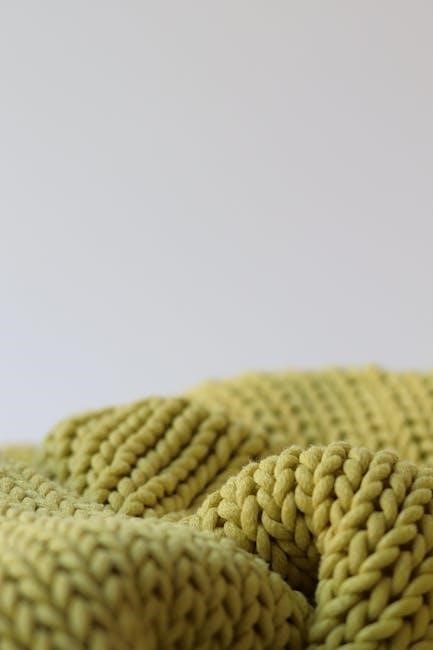
Popular Needlepoint Stitches
Popular needlepoint stitches include the Tent Stitch, Continental Stitch, and Basketweave, each offering unique textures and versatility for creating backgrounds, motifs, and intricate designs with precision and flair.
3.1 Basic Stitches for Beginners
Mastering basic needlepoint stitches is foundational for beginners. The Tent Stitch is the simplest, covering canvas evenly with diagonal stitches. The Continental Stitch, similar but reversible, is ideal for backgrounds. The Basketweave Stitch creates a sturdy fabric-like texture, perfect for large areas. The Half Cross-Stitch is versatile and easy to learn. These stitches are essential for building confidence and skill. Start with mono canvas and tapestry wool for best results. Practice even tension to maintain canvas stability. Beginning with these stitches ensures a strong foundation for more complex designs. Use stitch guides to refine your technique and explore creative possibilities gradually.
3.2 Intermediate Stitches for Complex Designs
Intermediate needlepoint stitches add depth and complexity to designs, offering variety for experienced stitchers. The Satin Stitch creates smooth, lustrous surfaces, while the Long Stitch is ideal for details. The Herringbone Stitch adds texture, and the Feather Stitch brings fluidity. These stitches are perfect for intricate patterns and layered compositions. Use them to enhance backgrounds or create dynamic motifs. Experiment with different threads to elevate your work. Stitch guides often include diagrams and tips for mastering these techniques, helping you transition seamlessly from basic to advanced projects with confidence and creativity.
3.3 Advanced Stitches for Expert-Level Projects
Advanced needlepoint stitches are designed for expert-level projects, offering intricate details and complex textures. The Woven Stitch creates a dimensional, fabric-like effect, while the Braid Stitch adds delicate, intertwining lines. These stitches require precision and control, making them ideal for experienced stitchers. They are often used to create detailed backgrounds, realistic motifs, and layered designs. Stitch guides provide detailed diagrams and step-by-step instructions to master these techniques. With practice, advanced stitches allow for truly unique and sophisticated needlepoint art, pushing the boundaries of creativity and craftsmanship.
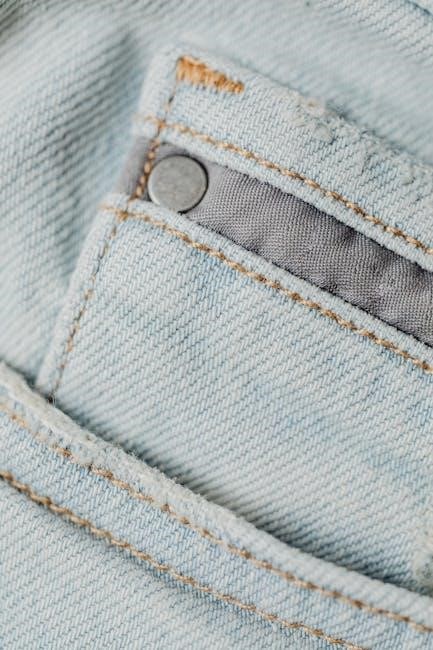
Materials and Tools for Needlepoint
Essential materials include sturdy canvas, sharp tapestry needles, and high-quality threads. Choosing the right tools ensures precision and durability, enhancing your stitching experience and project outcomes.
4.1 Essential Supplies for Getting Started
Beginners should start with a sturdy canvas, typically made of mono or penelope material, and a set of sharp tapestry needles. High-quality embroidery floss or yarn is crucial for vibrant results. A stitch guide or chart is indispensable for following patterns accurately. Scissors, a needle threader, and a small hoop or stretcher frame are also necessary to maintain tension and keep your work neat. Additional tools like a magnifying glass or needle minder can enhance your stitching experience. Investing in these basics ensures a smooth and enjoyable journey into needlepoint.
4.2 Choosing the Right Canvas and Threads
Selecting the appropriate canvas and threads is vital for achieving professional results in needlepoint. Canvas options include mono, penelope, and interlock weaves, each suited for different project sizes and complexities. Mono canvas is ideal for detailed work, while interlock is best for large-scale designs. For threads, consider using high-quality embroidery floss or specialty yarns like wool or silk, which offer durability and vibrant colors. Always match thread colors to your stitch guide and ensure they complement the canvas material. Choosing the right materials enhances both the stitching experience and the final appearance of your needlepoint project.
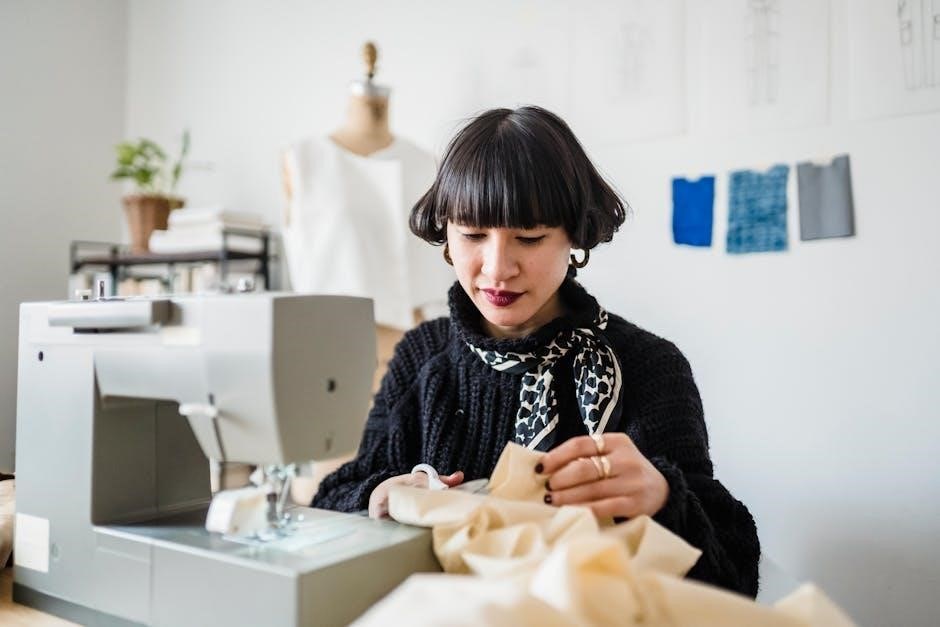
Step-by-Step Guide to Stitching
Start with prepared canvas and tools, follow the stitch guide for accuracy, and maintain consistent tension. Mark your chart to track progress and ensure even stitches throughout.
5.1 Preparing Your Canvas and Tools
Begin by stretching and securing your needlepoint canvas on a frame or lap stand to maintain tension. Gather essential tools like sharp tapestry needles, a pair of scissors, and a thimble to protect your fingers. Organize your threads or yarns according to the stitch guide, ensuring each color is easily accessible. Review the chart to understand the project layout, and lightly mark grid lines or key points on the canvas if needed. Proper preparation ensures a smooth and enjoyable stitching experience.
5.2 Following the Stitch Guide for Accuracy
Accurately following a needlepoint stitch guide ensures your project aligns with the intended design. Start by carefully interpreting the chart, where each symbol corresponds to a specific stitch or thread color. Use the guide to count threads on the canvas, maintaining consistency to avoid misalignment. Pay attention to symbols, arrows, and shading, which indicate stitch direction and placement. For clarity, use a highlighter to mark completed sections on the chart. Keep threads organized by color to prevent confusion. By adhering to the guide, you’ll achieve precision and bring your needlepoint design to life seamlessly.
5.3 Tips for Maintaining Tension and Even Stitches
Maintaining consistent tension is crucial for even, professional-looking stitches. Use a needlepoint frame or stretcher bars to keep the canvas taut, ensuring steady stitching. Always insert the needle in the same direction to prevent unevenness. Avoid pulling threads too tightly, as this can distort the canvas. Regularly check your work to ensure stitches align evenly. Using high-quality needles and appropriate thread types helps maintain uniformity. Take breaks to avoid fatigue, which can lead to inconsistent tension. By following these tips, you’ll achieve smooth, even stitches that enhance your needlepoint design.
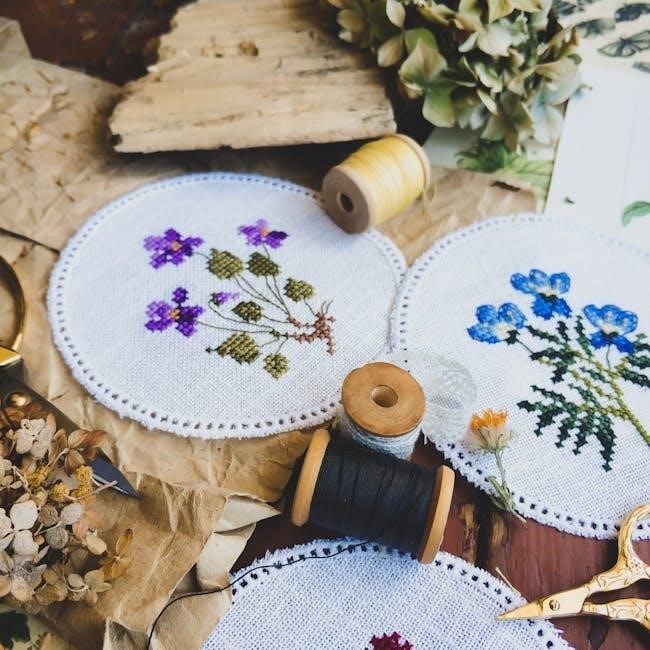
Common Mistakes and Solutions
Common mistakes include miscounting stitches and uneven tension. Use guides and templates to stay organized. Regularly check your work to avoid costly corrections.

6.1 Avoiding Errors in Counting and Stitch Placement
Accuracy in counting and stitch placement is crucial for flawless needlepoint projects. Mark your chart liberally to track progress and use templates for alignment. Count stitches vertically and horizontally to ensure consistency. Regularly review your work to catch errors early. Maintain even tension to prevent canvas distortion. Use a needlepoint stand to keep the canvas taut, reducing misplacement. These practices help minimize mistakes, ensuring your design aligns perfectly with the guide. By staying organized and methodical, you can achieve professional-quality results.
6.2 Fixing Mistakes Without Unraveling Your Work
Mistakes in needlepoint can be corrected without undoing your entire project. Use a tapestry needle to gently remove incorrect stitches, working carefully to avoid damaging the surrounding threads. For tension issues, adjust stitches individually rather than pulling them out completely. Utilize small scissors to trim misplaced threads close to the canvas, then re-stitch with the correct color. Maintain even tension while fixing to prevent puckering. Regularly review your work to catch errors early, ensuring a polished finish. Patience and attention to detail are key to preserving your needlepoint’s integrity and beauty.
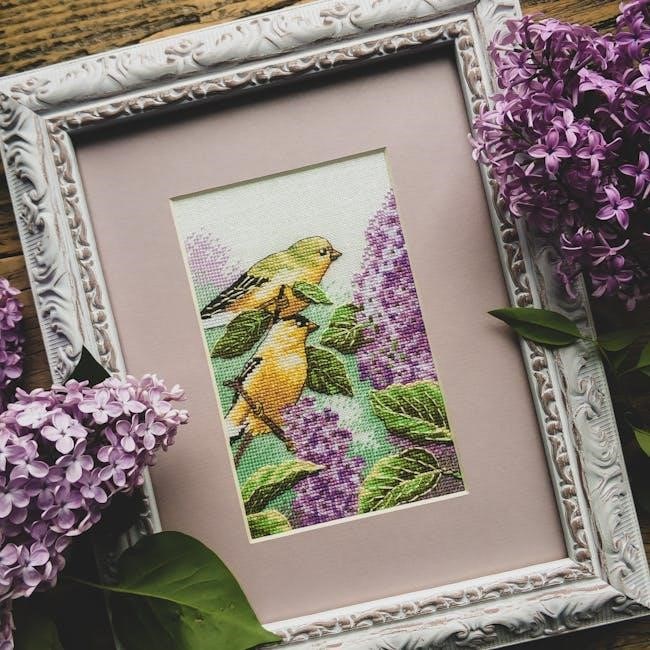
Customizing Your Stitch Guide
Customizing your stitch guide allows you to adapt stitches for unique designs. Adjust patterns to suit canvas sizes, add personal touches, and experiment with thread colors for creativity.
7.1 Adapting Stitches for Different Canvas Sizes
Adapting stitches for various canvas sizes ensures your design remains proportionate and visually appealing. Use scaling techniques to adjust stitch counts, maintaining balance and detail. Larger canvases may require more detailed stitches, while smaller ones benefit from simpler patterns. Adjusting thread thickness and color density can also enhance the overall look. By modifying your stitch guide, you can create cohesive designs across different sizes, ensuring each project is tailored to its specific canvas dimensions for optimal results.
7.2 Adding Personal Touches to Your Design

Personalizing your needlepoint project enhances its uniqueness and charm. Experiment with specialty threads, like metallic or silk, to add texture and shine. Modify color schemes to match your preferences or complement a room’s decor. Incorporate unique stitches or creative techniques to give your design a personal flair. Marking your chart with notes or symbols can help track custom changes. Consider adding monograms or subtle motifs for a distinctive touch. By tailoring your design, you create a one-of-a-kind piece that reflects your style and creativity, making it truly special and meaningful.

Resources for Learning and Inspiration
Explore online communities, forums, and digital charts for inspiration. Utilize tutorials, blogs, and guides to master stitches and spark creativity in your needlepoint projects;
8.1 Recommended Stitch Guides and Tutorials
Discover highly-rated stitch guides and tutorials from experts like Janet M. Perry and Laura Taylor. Platforms like Morgan Julia Designs and Tony Minieri offer detailed charts and instructions. Explore digital downloads for convenience, featuring step-by-step visuals and tips. Blogs and websites provide free tutorials, catering to all skill levels. These resources help master complex stitches and inspire unique designs. Utilize them to enhance your needlepoint skills and explore creative possibilities effectively.
8.2 Online Communities and Forums for Needlepoint Enthusiasts
Join vibrant online communities like Stitch Style Needlepoint and SilverStitch to connect with fellow enthusiasts. These forums offer invaluable support, tips, and inspiration for your projects. Share your work, ask questions, and learn from experienced stitchers. Many communities feature tutorials, feedback sessions, and resources for mastering needlepoint. Participating in these groups can help you troubleshoot challenges and discover new techniques. They also provide motivation and encouragement, fostering a sense of belonging among needlepoint enthusiasts worldwide.
Mastering needlepoint stitch guides unlocks creativity and precision, offering a comprehensive pathway to confidently bring any design to life while fostering continuous learning and artistic expression.
9.1 Final Tips for Mastering Needlepoint Stitch Guides
To master needlepoint stitch guides, start by using high-quality materials and always reference your guide for accuracy. Practice basic stitches regularly to build muscle memory. Begin with smaller projects to gain confidence before tackling complex designs. Use online tutorials and forums for additional guidance and inspiration. Stay organized by marking your chart as you progress. Experiment with thread colors and techniques to add personal touches. Finally, be patient with yourself—precision and creativity take time to develop. Join needlepoint communities to share ideas and learn from others.
9.2 Encouragement to Explore and Create
Embrace the world of needlepoint by exploring new stitches, threads, and techniques. Allow yourself to experiment with colors and patterns, turning your canvas into a unique reflection of your creativity. Draw inspiration from nature, art, or personal experiences to craft meaningful designs. Don’t be afraid to add personal touches or try unconventional methods—every stitch tells a story. Join needlepoint communities to share ideas and gain motivation. Remember, creativity is a journey, and every project is an opportunity to learn and grow. Stitch with passion and enjoy the process of bringing your vision to life!